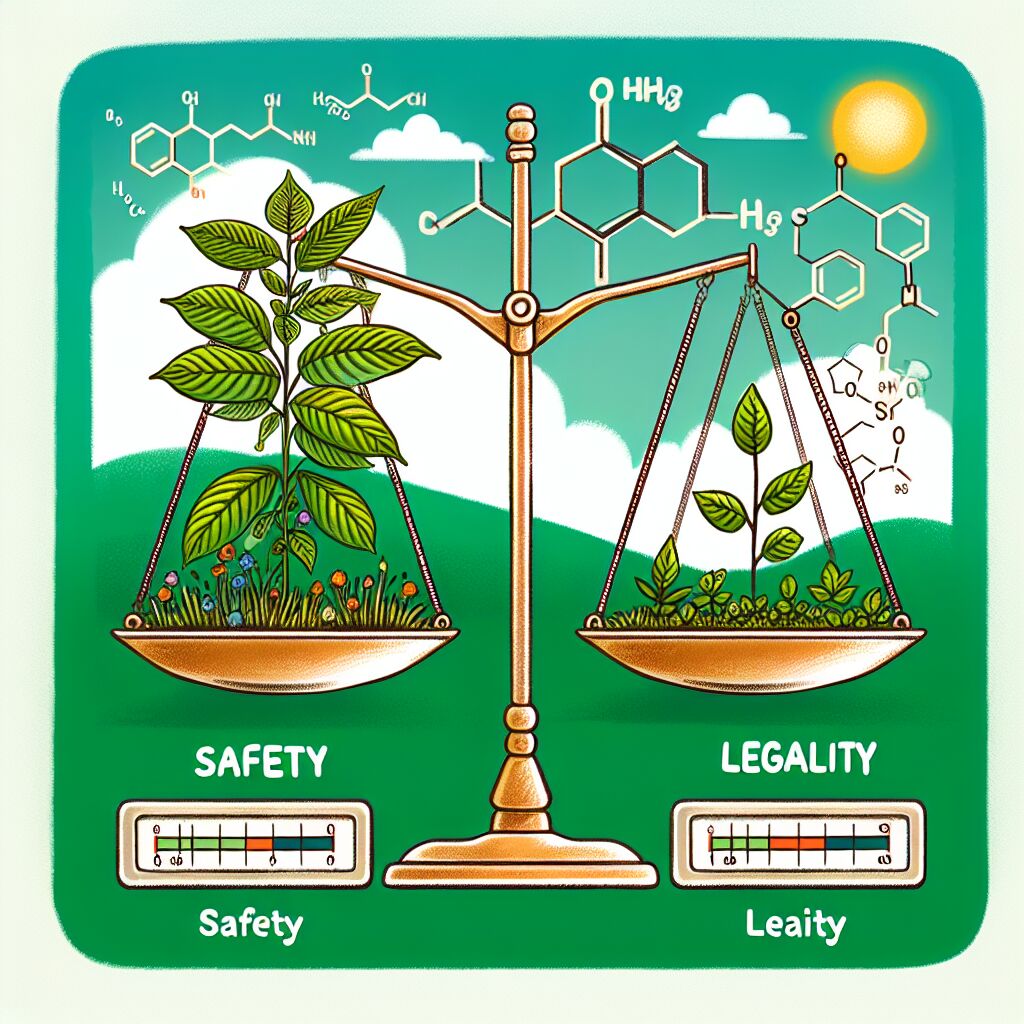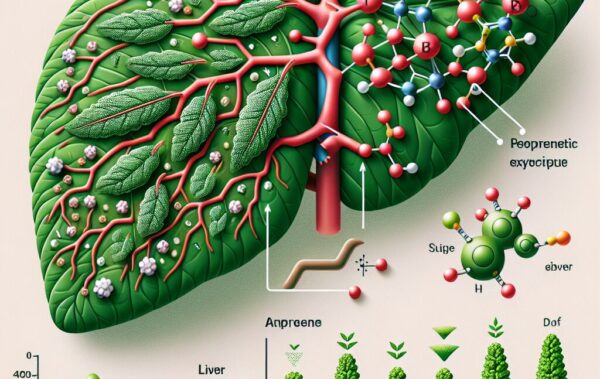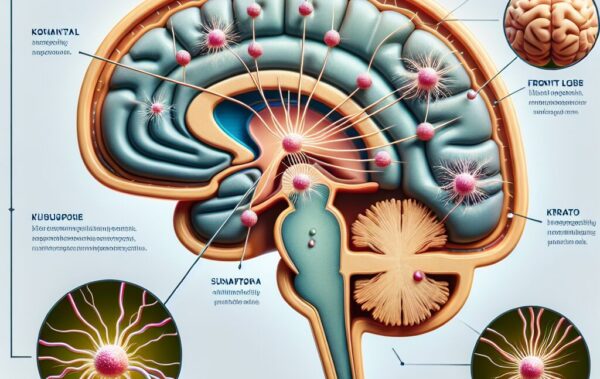.container {max-width: 1200px;}
- Understanding kratom and synthetic cathinones
- Comparative health risks
- Addiction potential
- Legal status across regions
- Conclusion and public awareness
Kratom, derived from the leaves of the Mitragyna speciosa tree native to Southeast Asia, has been used in traditional medicine for centuries. It is touted for its potential to alleviate pain, enhance mood, and provide mild stimulant effects. The primary active compounds in kratom, mitragynine and 7-hydroxymitragynine, interact with the body’s opioid receptors, although their effects are said to be less potent than traditional opioids.
On the other hand, synthetic cathinones, often referred to as “bath salts,” are part of a group of designer drugs that mimic the effects of substances like amphetamines and cocaine. These compounds are synthetic derivatives of the cathinone found in the khat plant. However, the effects can be significantly more unpredictable and dangerous due to the lack of regulated production standards.
Kratom products come in various forms including kratom powder, capsules, and kratom edibles. These products are generally consumed orally, either by brewing the powder into tea, swallowing capsules, or enjoying infused edibles.
In stark contrast, synthetic cathinones are most commonly found as powders but can also be ingested in pill form, inhaled, or injected. This variety in administration routes often leads to rapid onset and intense effects, which contribute to their high potential for abuse and acute health risks.
Comparatively, while kratom is promoted for its natural origin and traditional use, synthetic cathinones are purely laboratory-created with no historical precedent for human consumption. This distinction is crucial as it often influences public perception and regulatory approaches. For instance, the unpredictable and aggressive nature of synthetic cathinones has led to a more robust crackdown, whereas kratom, despite facing scrutiny, enjoys legal market presence in several regions. You can explore the different products and their benefits on our shop page.
Moreover, the physiological impact of these substances varies widely. Kratom tends to produce effects such as pain relief, relaxation, and mild euphoria. In contrast, synthetic cathinones may induce extreme euphoria, heightened alertness, and intense agitation, often leading to severe psychological and physical side effects such as hallucinations, aggressive behavior, and cardiovascular issues.
Understanding the fundamental nature and consumption methods of kratom and synthetic cathinones not only highlights their differing backgrounds but also underscores the varied approaches needed for addressing their respective safety and legality.
Comparative health risks
When discussing the health risks associated with kratom and synthetic cathinones, it is essential to consider both the potential benefits and the adverse effects each substance may cause.
Kratom is often cited for its pain-relieving and stimulant properties, derived mainly from its active alkaloids, mitragynine and 7-hydroxymitragynine. Though the use of kratom may carry some risks such as nausea, constipation, and in rare instances, liver toxicity, it has generally lower toxicity compared to synthetic cathinones. Acute kratom overdoses are not commonly associated with fatalities when used responsibly; however, mixing kratom with other substances, notably alcohol or opioids, may amplify adverse effects.
In comparison, synthetic cathinones, commonly referred to as “bath salts,” present more severe health risks due to their highly potent, synthetic nature. These designer drugs often mimic the effects of stimulants like amphetamines, leading to a broad spectrum of potential adverse effects. Users may quickly experience severe symptoms like chest pains, paranoia, and extreme agitation, which can rapidly escalate to violent behavior and hallucinations. Cardiovascular complications and acute psychiatric crises are not uncommon, often necessitating emergency medical intervention.
Several factors contribute to the increased health risks associated with synthetic cathinones:
- Unpredictable potency
- Risk of contamination with other harmful substances
- Absence of standardized dosage guidelines
- Rapid onset of intense psychological effects
In contrast, kratom users generally have access to a variety of consumption forms, including kratom powder and kratom capsules, which are typically sourced from regulated environments. Such availability helps provide more controlled dosing and understanding of product strength, possibly contributing to safer usage practices.
A key point of differentiation is the historical use and anecdotal evidence available for kratom, which is often consumed within a traditional medicinal context in Southeast Asia. On the other hand, synthetic cathinones lack this historical use and are relatively new, designed purely for recreational purposes without any traditional medical backing. The absence of long-term studies on synthetic cathinones further compounds the difficulty in understanding their full range of health risks.
In light of the discussion on safety and health risks, it is prudent to acknowledge that the choice between natural products like kratom and unregulated synthetic substances should be informed by thorough research and awareness of the potential dangers. The variations in physiological impacts highlight that while kratom can be integrated more safely into daily life for benefits such as pain relief and mood enhancement, synthetic cathinones possess a higher risk profile warranting cautious avoidance.
For those exploring kratom as an alternative to more potent synthetic substances, browsing our selection of kratom capsules or kratom edibles might present convenient and potentially safer options.
Addiction potential
When considering the addiction potential of kratom and synthetic cathinones, one must examine the intricate interplay between their pharmacological effects and user behaviors. Kratom, known for its analgesic and stimulant properties, typically engages the opioid receptors, albeit in a manner less intense than traditional opioids. This interaction implies that while kratom can lead to dependence, the risk might be relatively lower than that of hard opioids. Noteworthy is the fact that kratom users often report a lesser degree of withdrawal symptoms, such as mild irritability, restlessness, and cravings, which are significantly more manageable compared to those observed with opioid withdrawal.
However, it’s important to acknowledge that kratom, like any psychoactive substance, is not without its addiction potential. Users who consume high doses or use kratom chronically might still develop a dependency. The nuanced nature of kratom’s addictive potential underscores the need for responsible usage, with many users finding success in integrating it into their lifestyle without severe dependence issues.
On the other hand, synthetic cathinones, notorious for their unpredictable potency and severe psychoactive effects, present a far greater risk of addiction. These designer drugs, designed to mimic the effects of amphetamines and cocaine, rapidly induce intense euphoria, heightened alertness, and a powerful urge to re-dose. The high addiction potential of these substances is further complicated by their capacity to induce severe cravings and withdrawal symptoms, such as intense mood swings, anxiety, and physical discomfort, which can persist for an extended period.
Several considerations highlight the addiction potential of synthetic cathinones:
- Rapid onset and intense euphoric effects
- Frequent re-dosing behavior among users
- Severe withdrawal symptoms
- Lack of standardized dosing and contamination risks
Synthetic cathinones’ addiction profile is exacerbated by their short-lived effects, leading users into a cycle of repeated consumption to maintain the desired high. This pattern not only contributes to the rapid development of tolerance but also increases the risk of severe addiction and associated health consequences.
For individuals seeking safer alternatives, kratom might be a more viable option, considering it has a lower propensity for abuse and dependence when used conscientiously. Kratom products vary widely, from kratom powder to capsules and extracts, allowing for controlled and measured consumption. The availability of different forms and strains also contributes to a tailored user experience, potentially reducing the risk of habitual misuse.
In this regard, understanding the nuanced addiction potential of kratom and synthetic cathinones can help consumers make informed decisions. Engaging with natural, historical substances like kratom might provide not only therapeutic benefits but also an alternative with a more manageable addiction profile compared to the hazardous nature of synthetic designer drugs. For a comprehensive look at available kratom products, you might explore the diverse offerings of Maeng Da kratom powder and Sumatra kratom capsules on our marketplace.
Legal status across regions
 Kratom’s legal status differs widely around the world, reflecting varying public perceptions and regulatory responses to the substance. In the United States, the legal status of kratom is a patchwork. While kratom is legal at the federal level, several states have enacted their own bans or regulations. For instance, states like Alabama, Arkansas, and Indiana classify it as a controlled substance. Conversely, states like Florida have legalized kratom, often with specific regulations to ensure product safety and consumer protection. In other parts of the world, countries like Thailand and Malaysia—where kratom plants naturally thrive—have recently relaxed their laws, allowing for medical and regulated use after decades of prohibition.
Kratom’s legal status differs widely around the world, reflecting varying public perceptions and regulatory responses to the substance. In the United States, the legal status of kratom is a patchwork. While kratom is legal at the federal level, several states have enacted their own bans or regulations. For instance, states like Alabama, Arkansas, and Indiana classify it as a controlled substance. Conversely, states like Florida have legalized kratom, often with specific regulations to ensure product safety and consumer protection. In other parts of the world, countries like Thailand and Malaysia—where kratom plants naturally thrive—have recently relaxed their laws, allowing for medical and regulated use after decades of prohibition.
Synthetic cathinones, often labeled as “designer drugs,” face stringent regulations globally due to their high abuse potential and severe health risks. These substances are commonly listed as Schedule I drugs in the United States, indicating they have a high potential for abuse, no accepted medical use, and a lack of accepted safety for use under medical supervision. Major international bodies and governments have similarly placed strict bans on synthetic cathinones, aiming to curb their production and distribution.
The European Union has also taken a robust stance against synthetic cathinones. Various EU member states have enacted laws to classify these substances as controlled drugs shortly after they emerge on the market. This swift response is often a measure to address the public health crises fueled by these substances’ unpredictable and dangerous effects.
There are several factors influencing these distinct legal approaches to kratom and synthetic cathinones:
- Historical use and cultural significance
- Documented medicinal benefits versus recreational intentions
- Public health implications and recorded adverse effects
The historical usage of kratom in traditional medicine within Southeast Asia contributes significantly to its acceptance in some regions. Conversely, synthetic cathinones are purely synthetic creations with no historical precedent, leading to more caution and prohibitive measures by authorities.
Moreover, the documentation of medicinal benefits, particularly in pain management and opioid withdrawal relief, plays a crucial role in shaping the legal landscape for kratom. For instance, the anecdotal evidence and emerging research suggesting kratom’s potential benefits may have influenced more lenient laws in several countries and states. On the other hand, synthetic cathinones are largely regarded as recreational substances with no acknowledged medicinal value, leading to a more stringent legal framework.
In Canada, kratom is legal for personal use but cannot be marketed for consumption. Marketing and selling kratom for any other use, such as an herbal supplement, contravenes Health Canada’s regulations. Similarly, Australia categorizes kratom as a Schedule 9 substance, rendering its sale, possession, and use illegal.
Countries in the EU, such as Germany and the United Kingdom, generally impose stringent controls on both kratom and synthetic cathinones. While synthetic cathinones are outright banned, kratom’s status can vary, sometimes being subject to medical regulation or outright prohibition.
| Region | Kratom Legal Status | Synthetic Cathinones Legal Status |
|---|---|---|
| United States | Patchwork legality; varies by state | Schedule I; banned |
| European Union | Varies by country; often tightly regulated | Banned |
| Canada | Legal for personal use | Banned |
| Australia | Schedule 9; illegal | Banned |
| Thailand | Recently relaxed for medical use | Banned |
Public perceptions also shape the legality of these substances. The general public often views kratom more favorably due to its natural origin and traditional medicinal uses. In contrast, synthetic cathinones, due to their association with severe adverse health effects and erratic behavioral outcomes, are viewed negatively.
For those considering kratom, understanding its legality in their region is imperative. When sourced from reputable vendors, kratom products such as kratom powder, capsules, and tea bags can be a beneficial addition to one’s health regime. Always check your local laws to ensure compliance while exploring the potential benefits of kratom over synthetic designer drugs.
Conclusion and public awareness
Public awareness plays a crucial role in shaping both individual choices and public policy regarding substances like kratom and synthetic cathinones. Understanding the differences in safety, health risks, and legal frameworks empowers consumers to make informed decisions.
One significant aspect of public awareness includes accurately disseminated information about potential risks and benefits. Misconceptions about substances often lead to uninformed usage that could result in severe health implications. For instance, while some users might seek out synthetic cathinones for their intense and rapid effects, they may not be fully aware of the severe and often dangerous side effects associated with their use. Public education campaigns that highlight these risks could significantly reduce the prevalence of misuse.
Furthermore, promoting responsible use of kratom, highlighting its traditional medicinal roles, and clarifying its effects compared to opioids and other psychoactive substances can foster a more balanced understanding. While trying to draw a stark line between natural products and synthetic designer drugs, it’s essential to note that responsible consumption and regulation play a pivotal role in ensuring user safety.
Consumers should seek out reputable sources for kratom products to ensure they are obtaining high-quality and accurately labeled items. Platforms like Kratom.Markets provide an array of kratom products, from powder to capsules and extracts, sourced from trusted brands. This not only guarantees product quality but also helps consumers abide by local laws and recommendations.
Additionally, the importance of scientific research cannot be overstated. Ongoing studies examining the safety, efficacy, and properties of kratom and synthetic cathinones can provide crucial data to inform regulatory decisions and public policy. Encouraging such research by supporting legislative measures for the controlled study of these substances can add valuable insights into their long-term impacts.
Moreover, involving healthcare professionals in public awareness campaigns can bridge gaps between consumer perceptions and clinical understandings of substance effects. Pharmacists, doctors, and addiction specialists can offer credible, science-backed advice that deters the misuse of high-risk substances.
Lastly, the portrayal of these substances in media shapes public perception significantly. Responsible media coverage that avoids sensationalism and prioritizes factual reporting can prevent stigmatization and promote a more nuanced view of kratom and synthetic cathinones. Conversely, fear-mongering and misinformation can lead to undue panic and policy decisions not grounded in scientific evidence.
Public awareness initiatives need to be multidimensional, incorporating education, regulatory compliance, scientific research, healthcare involvement, and responsible media representation. By fostering a well-rounded understanding of kratom and synthetic cathinones, both at individual and societal levels, we can better manage their use and mitigate potential health risks. For those interested in exploring kratom as an alternative with known historical and medicinal backgrounds, browsing the selections on our shop page can be a safe starting point.









